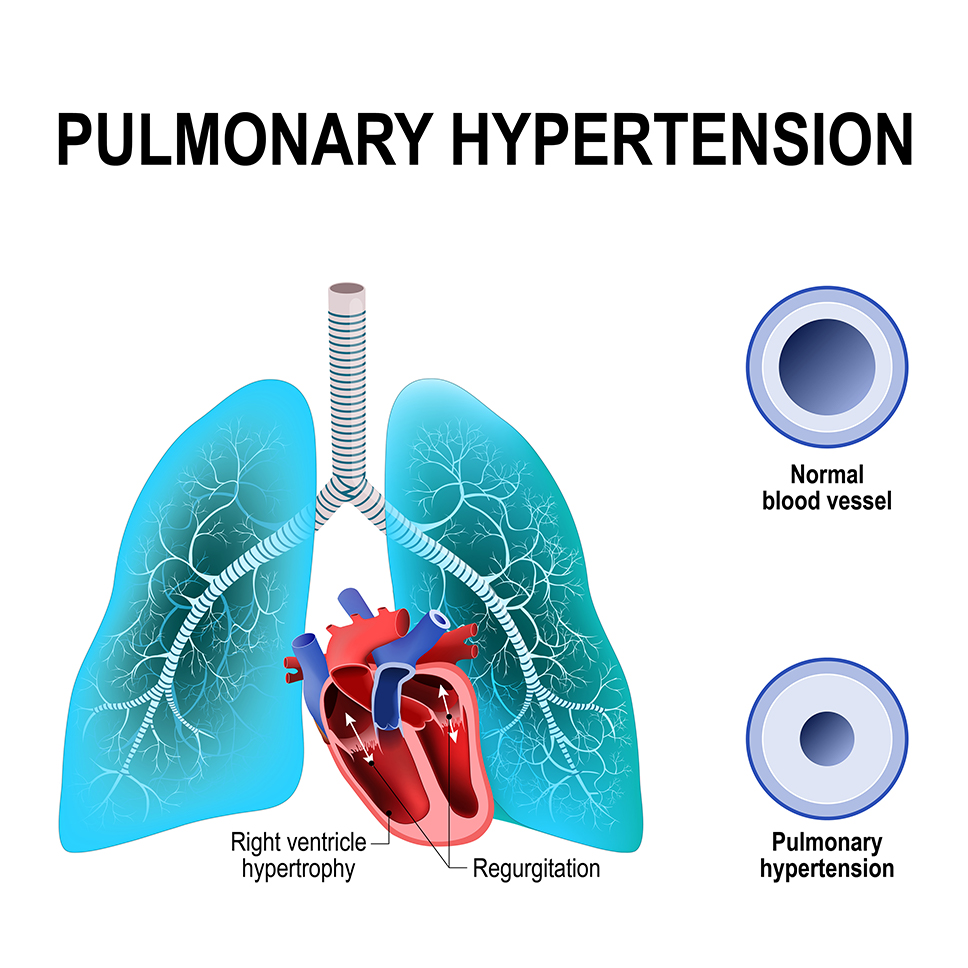Chronic Thromboembolic Pulmonary Hypertension

Chronic Thromboembolic Pulmonary Hypertension (CTEPH) is a rare form of pulmonary hypertension that occurs when blood clots, or thrombi, form in the arteries of the lungs and do not fully dissolve. These clots can obstruct the flow of blood through the lungs, leading to increased blood pressure and strain on the heart.
CTEPH is a chronic condition that often develops after a person has had a blood clot in the legs or lungs. It can also occur in people who have had surgery on the lungs or chest. In this article, we will take a closer look at the risk factors, symptoms, and treatment options of CTEPH.
How Can CTEPH Affect Your Health?
CTEPH is caused when blood clots in the lung arteries don’t dissolve and lead to the development of scar-like tissue. That, in turn, narrows the blood vessels and restricts the flow of oxygen-poor blood to the lungs.
It results in a buildup of blood in the heart and forces the heart’s right side to work harder to pump out deoxygenated blood. That, in turn, can lead to right-sided heart failure.
Risk Factors of CTEPH
Several risk factors may increase a person’s chances of developing chronic thromboembolic pulmonary hypertension. These include:
- Previous blood clot: CTEPH often develops after a person has had a blood clot in the legs or lungs. These blood clots, also known as thrombi, can break off and travel to the lungs, where they can obstruct blood flow and lead to CTEPH.
- Surgery on the lungs or chest: People who have had surgery on the lungs or chest, such as a lobectomy or pneumonectomy, may be at increased risk of developing CTEPH.
- Deep vein thrombosis (DVT): DVT is a blood clot that forms in the deep veins of the legs. It can be caused by factors such as prolonged immobility, certain medications, and certain medical conditions. Having DVT increases the risk of developing CTEPH.
- Family history of blood clotting disorders: Some people may have a family history of blood clotting disorders, such as thrombophilia, which increase the risk of developing blood clots and CTEPH.
- Gastrointestinal disorders, such as irritable bowel syndrome
Additionally, females and people with blood types other than type O are at a higher risk of developing CTEPH.
Symptoms of CTEPH
Symptoms of CTEPH may include shortness of breath, especially during physical activity or when lying down, chest pain, fainting, dizziness, fatigue, and swollen legs or ankles. As the condition progresses, it can cause heart failure and other serious health problems.
Moreover, CTEPH can lead to heart palpitations, resulting in a pounding heartbeat. It can also cause the fingers and toes to develop a bluish tint (a condition called cyanosis). Coughing up blood is a rare but indicative sign of CTEPH.
Diagnosis and Treatment of CTEPH
Diagnosis of CTEPH typically involves a combination of tests, including a chest X-ray, echocardiogram, CT scan, and pulmonary function test. A pulmonary angiogram, in which a dye is injected into the blood vessels of the lungs, may also be performed to identify areas of blockage.
Treatment for CTEPH may involve medications to lower blood pressure and improve blood flow to the lungs. In some cases, surgery may be recommended to remove the blood clots from the pulmonary arteries. The most common surgical procedure for CTEPH is called pulmonary thromboendarterectomy (PTE).
During PTE, the surgeon removes the blood clots from the pulmonary arteries and may also repair any damaged blood vessels. PTE is usually reserved for people with severe CTEPH who have not responded to other treatments.
Another procedure called pulmonary balloon angioplasty is also used for the treatment of CTEPH. In this case, a catheter with a balloon tip is used to push aside scar tissue and open up the damaged lung arteries.
In addition to medications and surgery, other treatments for CTEPH may include oxygen therapy, rehabilitation, and lifestyle changes to help manage symptoms and improve overall health. Also, patients often have to take blood thinners, such as warfarin, throughout their lives to prevent the formation of blood clots.
In Conclusion
CTEPH is a rare and serious form of pulmonary hypertension that can lead to serious health problems if left untreated. The good news is that the condition is treatable. Early diagnosis and treatment are crucial to improve symptoms and prevent further complications.
Dr. C Raghu is an eminent cardiologist who has helped thousands of patients with cardiovascular ailments. If you or anyone you know is experiencing symptoms of CTEPH, feel free to reach out to Dr. Raghu today.

